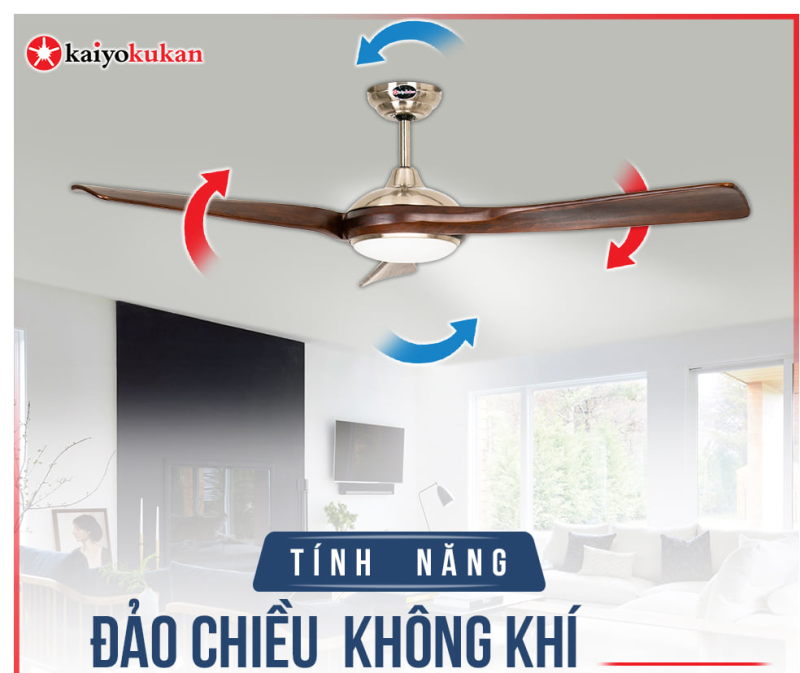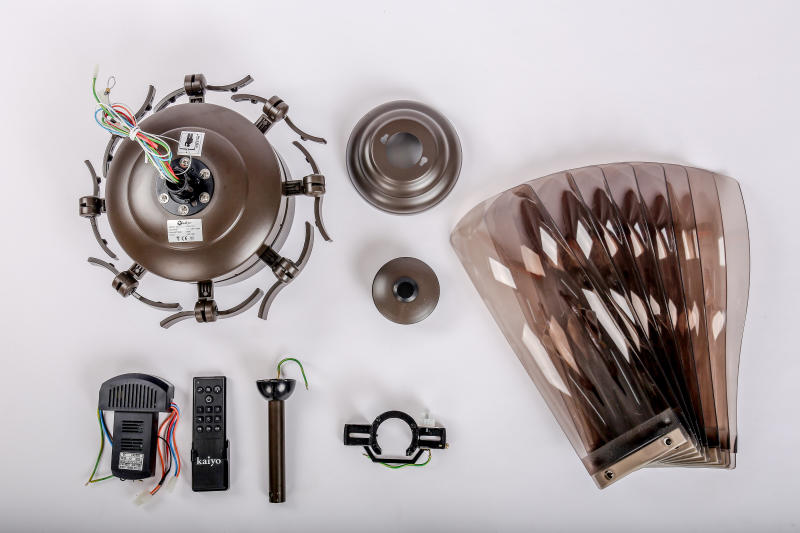Why ceiling fans don’t provide cool air while still spinning and how to fix it
Ceiling fans operate in reverse
Normally, ceiling fans spin in a counter-clockwise direction, pushing air down to create a cool breeze. However, many current fan models are integrated with a reversible blades feature, which allows them to rotate in the clockwise direction.
This feature is often used in winter to help draw moisture from the floor, creating an updraft that helps move warm air trapped near the ceiling back around the room. Therefore, the ceiling fan does not generate cool air even though it’s still on.
How to fix: Check the ceiling fan’s direction of rotation to see whether it’s clockwise or counterclockwise. If it is clockwise, you can turn off the reversible blade feature by pressing the button on the remote control. For conventional ceiling fans, this feature is not integrated in the remote control, you will have to use a ladder to climb up and push the button on the fan.

Ceiling fan is not the right size
If you chose the unsuitable ceiling fan size for your room’s area, the device can still work normally but doesn’t produce cool air due to its small capacity. Therefore, you should calculate the area of the room before buying a ceiling fan.
How to fix: Buy a ceiling fan in accordance with the room’s area following KaiyoKukan’s suggestions below.
-
Room area less than 8m2: choose a ceiling fan with diameter ranging from 0.76 to 1.1m.
Room area from 8 - 14 m2: choose a ceiling fan with diameter from 1.1 to 1.32m.
Room area from 14 - 21 m2: choose a ceiling fan with diameter from 1.32 - 1.45m
Room area from 21 to 35 m2: choose a ceiling fan with a diameter longer than 1.5 m.
The air is trapped in the plaster ceiling
Installing a ceiling fan on a wooden or plaster drop ceiling can probably be the main reason why the ceiling fan doesn’t blow cool air. The air produced by the fan may be obstructed due to improper installation position
How to fix: Check if the ceiling fan is mounted lower than the ceilings’ frames or the air is trapped in the ceiling or not.
Dust
Dirt on the ceiling fan limits the fan's rotation speed, creating a weak airflow. Therefore, when the ceiling fan is turned on, the airflow you feel will not be as cool as when you first used a KaiyoKukan ceiling fan.
How to fix: Clean the ceiling fan periodically once every 1-2 months with a vacuum cleaner or soft damp cloth. With the whisper-quiet and durable motor of the fan, your living space will soon be filled with fresh air once again.
Low oil reservoir
Ceiling fans can be worn after a long time in use. Therefore, during operation, the blades may vibrate or shake owing to reduced rotation speed caused by friction force. If this condition persists, the silver motor will be damaged.
How to fix: Regularly clean, maintain and check the ceiling fan’s performance. Add oil to the silver engine or replace it with the help of genuine warranty service.
Capacitor failure
The capacitor is an important part in the process of producing air because it can affect a ceiling fan’s rotation speed. If the capacitor fails, the blades spin slowly or does not spin at all.
How to fix: Check the fan's capacitor, equip your ceiling fan with a new and genuine capacitor if the old one is broken. If using a KaiyoKukan ceiling fan, you can bring it to any of KaiyoKukan's nationwide service centers.

Broken copper coil
The copper coil transmits electricity to keep the fan working properly. During operation, thermal impacts or short circuits may cause the copper coil to be broken. It’s difficult to indicate where the copper wire is broken because the coil consists of many different layers.
How to fix: Users can buy a new copper coil themselves but the replacing process requires precise technical skills. Or you can bring it to a genuine service center for repair.
Click to view decorative ceiling fans good price !
How to use the ceiling fan properly to ensure durability and quality
-
Install the ceiling fan in the center of the room to help the wind to spread evenly throughout the room and achieve the highest performance when in use.
Pay careful attention to the installation technique to ensure that the connections are firm, avoid any possible danger during use.
Do periodical cleaning to prevent dust and dirt from causing the fan to operate slowly or provide low air volume.
Choose the type of fan that is most suitable for your needs and the area of the room, since KaiyoKukan ceiling fans come in many different designs, capacities, blade sizes and features.
Turn off the ceiling fan within 15 - 30 minutes after having used it at highest speed continuously for 2 hours to ensure longevity and save energy. Prefer using the device at a moderate speed and avoid exposing yourself to direct wind flows as it can cause discomfort.
Periodic maintenance is necessary to promptly detect, repair, and remedy failures. The most ideal maintenance period is every 6 months.
When maintaining and cleaning the fan, it is essential to ensure that the power source has been disconnected and use adequate and safe protective gear.

Surely by now, you already know the reasons why your ceiling fan doesn’t blow cool air and some effective solutions to this problem. Throughout use, do not forget the above-mentioned usage notes to ensure the durability and efficiency of the ceiling fan. Contact Kaiyokukan today for useful advice on new, high quality and moderate priced Japanese KaiyoKukan ceiling fans!
Click to view decorative ceiling fans good price !
